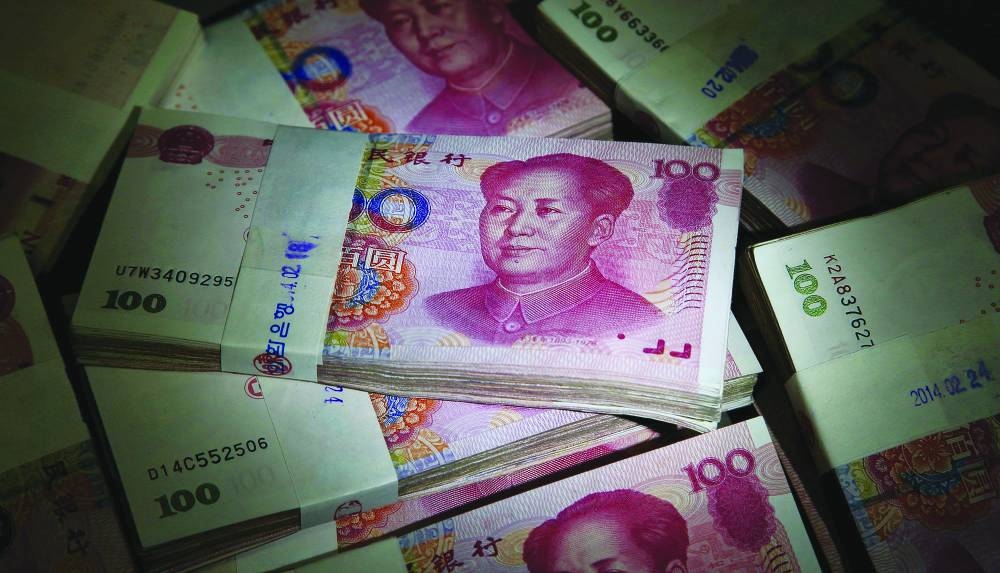China delivered its strongest ever pushback against a weaker yuan via its daily reference rate for the managed currency, as it sought to restore confidence to a market spooked by disappointing data and heightened credit risks.
The People’s Bank of China (PBoC) set its so-called fixing at 7.2006 per dollar compared to an average estimate of 7.3047 in a Bloomberg survey with traders and analysts. That was the largest gap to estimates since the poll was initiated in 2018.
Authorities have been escalating their support for the embattled yuan over the past week, only to see it sinking in both onshore and overseas markets toward multi-year lows. This week they told state-owned banks to step up intervention, according to people familiar, and the central bank said Thursday it will resolutely prevent excessive currency moves.
For years, policymakers have been highly sensitive to any wild yuan swings, which could reignite the speculative attacks that accompanied the shock devaluation eight years ago. When bearish sentiment is at an extreme level, a direction the market in heading toward right now, China is at risk of a vicious cycle of capital outflows and even sharper depreciation.
To nip such a crisis in its bud, the PBoC tends to start by managing the yuan tightly with the fixing, which limits the currency’s daily moves by 2% on either side. If bears refuse to hit the exit, the central bank can opt to deploy more aggressive tools.
Those measures include injecting dollar liquidity, elevating the cost of putting on short-yuan trades in the forwards market or even engineering a shortage of the Chinese currency in Hong Kong.
“As the dollar-yuan pair is already around a historically high level while the confidence level is particularly weak with rising debt concerns, it’s important for the PBoC to step up its measures to stabilise the yuan,” said Xiaojia Zhi. head of research at Credit Agricole CIB. “Rapid yuan depreciation could also further dampen confidence and weigh on risk sentiment.”
After Friday’s fixing, the onshore yuan advanced about 0.1%, while the currency gained by a similar magnitude in overseas to 7.30 per dollar. The reference rate was also set at a stronger level to the previous day for the first time in six sessions.
“I don’t think we’re going to go much lower than that,” said Jens Nordvig, the CEO at Exante Data, in an interview with Bloomberg TV. “They’ve had their warning shots this week.”
Bloomberg’s daily survey on the fixing, which is closely-watched by investors as a gauge of market expectations for the currency, was conducted with nine traders and analysts Friday morning. The PBoC’s reading was stronger than all but one prediction collected in the poll.
On top of requesting more intervention this week, Chinese authorities also asked banks to check if local corporates are speculating on one-way moves in the yuan, people familiar with the matter said. That request came as the offshore yuan fell toward 7.35, a level that top leadership has been paying close attention to, the people said.
While the yuan has edged off its lows, analysts say it will still face pressure in the long term due to the nation’s sluggish growth and monetary policy divergence with the US. The gap between the yield on China’s 10-year bonds and their US counterparts remained near the widest since 2007, favouring American assets in the eyes of investors.
“To me, US inflation is no longer the most pressing or dominant issue, because the worst is clearly behind us,” said Stephen Jen, the CEO at Eurizon SLJ Capital. “Faltering China is now the main factor with global implications.”
Underwhelming economic data in retail sales and housing prices — coupled with a spreading crisis in the property sector — are also keeping investors from the yuan. PBoC rate cuts to stimulate growth have added even more stress.
The foreign-exchange market is currently in line with fundamentals, the PBoC said in its most recent monetary policy report.
“Authorities are preparing to draw a line in the sand and defend the currency from further weakness,” said Khoon Goh, head of Asia research at Australian & New Zealand Banking Group in Singapore. “But for a more sustained rebound in the yuan, we really need to see US 10-year bond yields come down from current high levels.”

Bundles of Chinese one-hundred yuan banknotes are arranged for a photograph at the Korea Exchange Bank headquarters in Seoul. China delivered its strongest ever pushback against a weaker yuan via its daily reference rate for the managed currency, as it sought to restore confidence to a market spooked by disappointing data and heightened credit risks.
